Secondary sunset or second sunset is a relatively new term. It’s used to describe the period of time immediately after the sun has dropped below the horizon.
Secondary sunset is important in photography because it yields arguably better pictures.
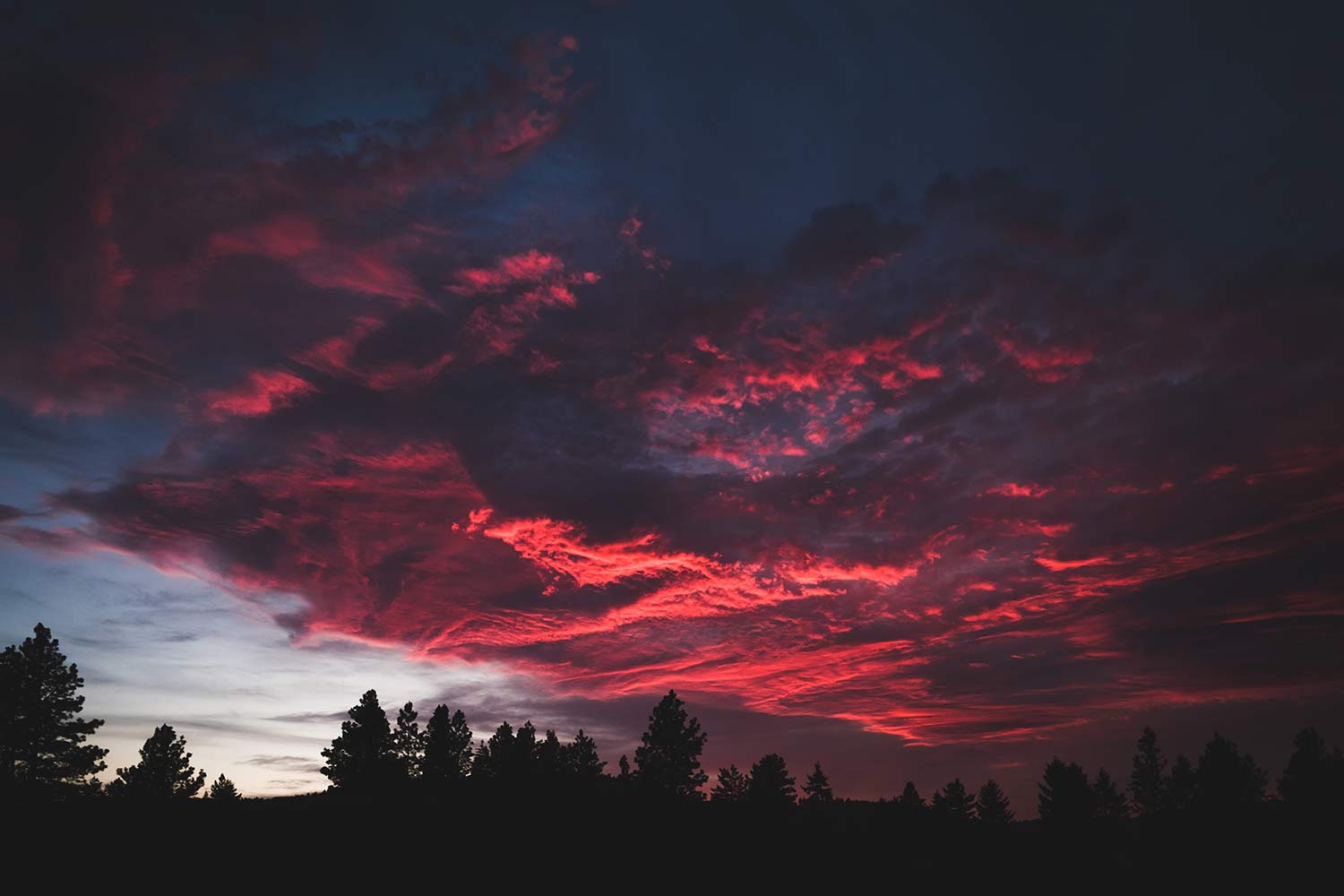
The colours are more diverse, more vibrant and in my opinion, more impressive than those captured whilst the sun is still above the horizon.
I believe the photographs of the second sunset are much more interesting than photographs of the sun in the process of setting, as the sun itself is so bright and skews the composition.
Our eyes are drawn to highlights, and whilst having the setting sun in the picture can draw the eye to the horizon line and create a sense of depth, I think it can become too much of a distraction, and detracts from the amazing colours that can be difficult to appreciate when the eye is being pulled to the bright dot in the image.
Take this image for example.
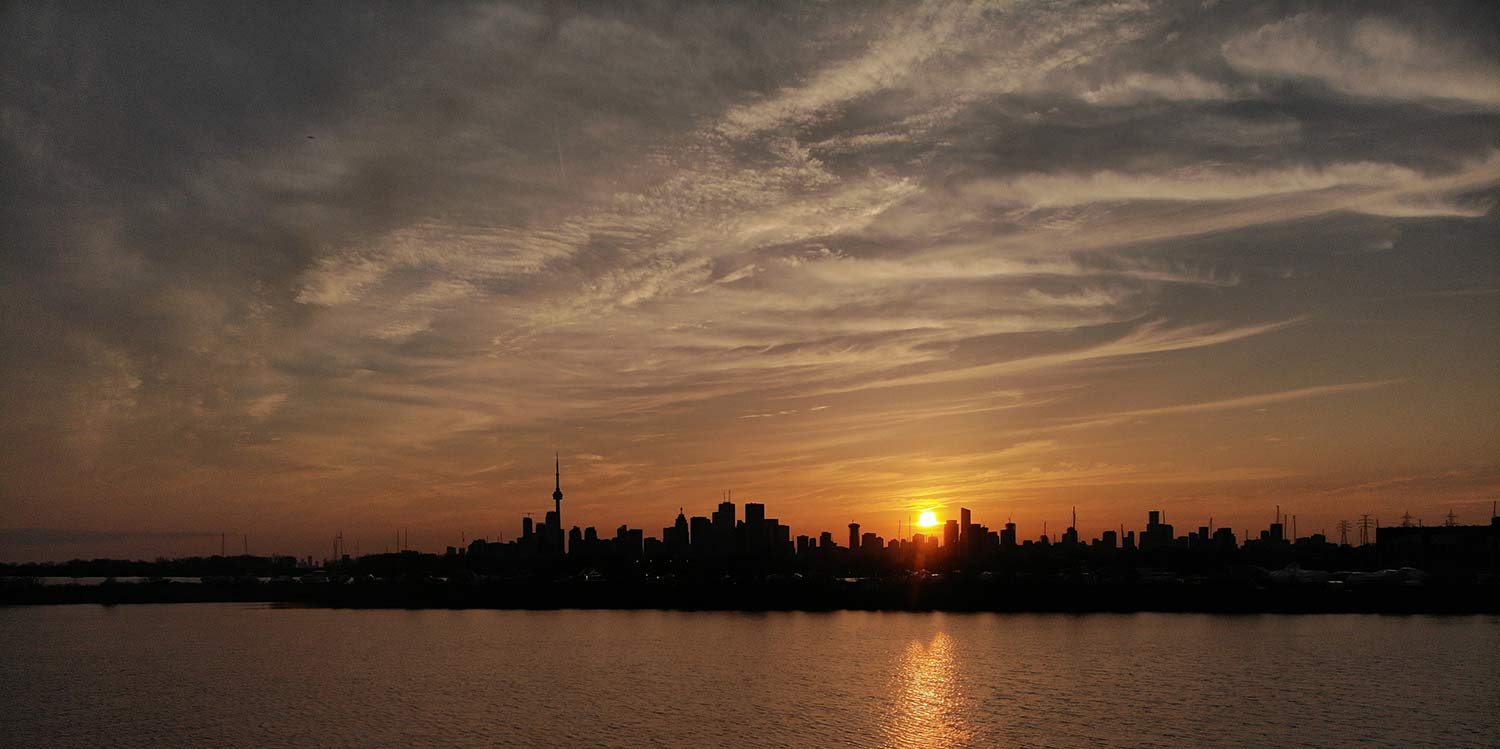
It’s a great picture. In my opinion, and my opinion only, the sun is too distracting (sorry Mike – big love still!). It pulls the eye straight to it, and you become fixated on it.
Sometimes this can work really well if used intentionally as a compositional tool. Like this.
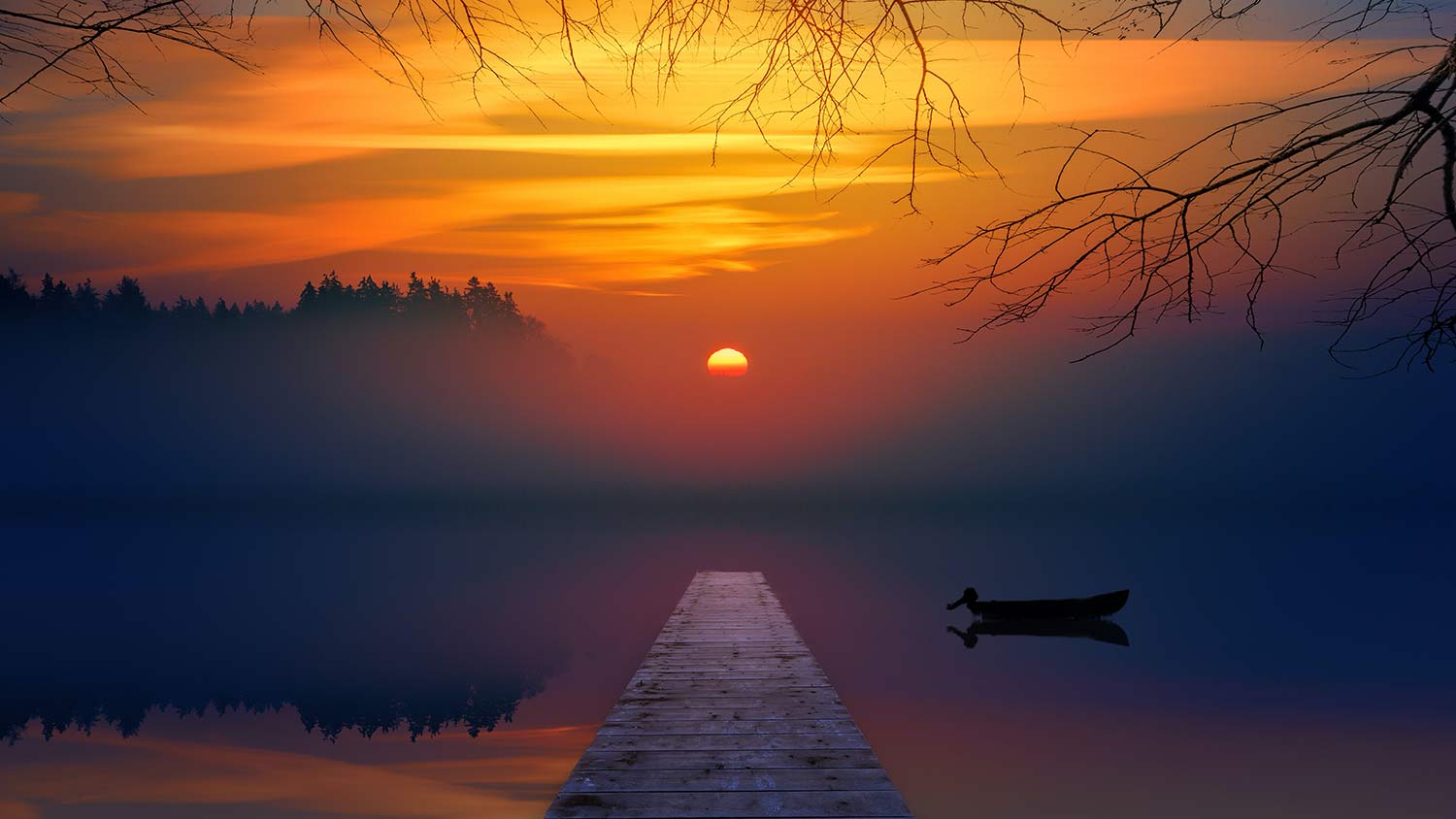
The jetty is pointing toward the sun, and the sun acts as a focal point. The sun is of course still brighter than it’s surroundings, but it is still an orange tone, it’s not pure white. In this example, if you take the sun away, there is no focal point, and the picture falls apart.
What’s my argument here? I think when the sun is a pure white dot in your pictures, it’s too distracting. And images can be made better by playing with the exposure, and waiting for the sun to drop below the horizon.
Hopefully after reading this article you will be inspired to head out and capture beautiful photographs of the second sunset yourself.
How to photograph a sunset is one of the most asked questions from beginner photographers. The sun often throws camera light meters in a frenzy as they struggle to work out how to create an even exposure when there is such a bright dot in the scene. There is relief from this exposure nightmare however, and that comes in the simple form of waiting for the sun to dip below the horizon. This exercise in patience and holding one’s nerve will result in being rewarded with a truly unique image.
The second sunset creates an entirely different mood, new colours and much more dramatic shadows of the clouds. As the sun has dropped that bit further below the horizon, any clouds in the sky will cast shadows at a much more dramatic angle, creating the opportunity to capture amazing photographs.
The joy of photographing landscapes, the joy indeed of photography itself, is the anticipation and excitement that comes from taking a photograph that is entirely unique. The second sunset phenomenon opens up all of those landscape spots that you feel may have been photographed to death, as this (quite literally) allows them to be viewed in an entirely new light.
So, we will cover;
- What is the Second Sunset?
- Is there a way of knowing when an amazing one will occur?
- Can we predict it’s beauty to save us wasted hikes up a hill only to be disappointed?
What is the Second Sunset?
No doubt you’ve seen it before – it’s the period of time immediately after the sun has dropped below the horizon. The drama hits it’s peak approximately 15 minutes after the sun is no longer visible, but this can vary.
Hikers, skiers, ramblers and photographers will no doubt attest to its beauty. The mood, the colours, the indescribable atmosphere, the second sunset can be truly breath-taking.
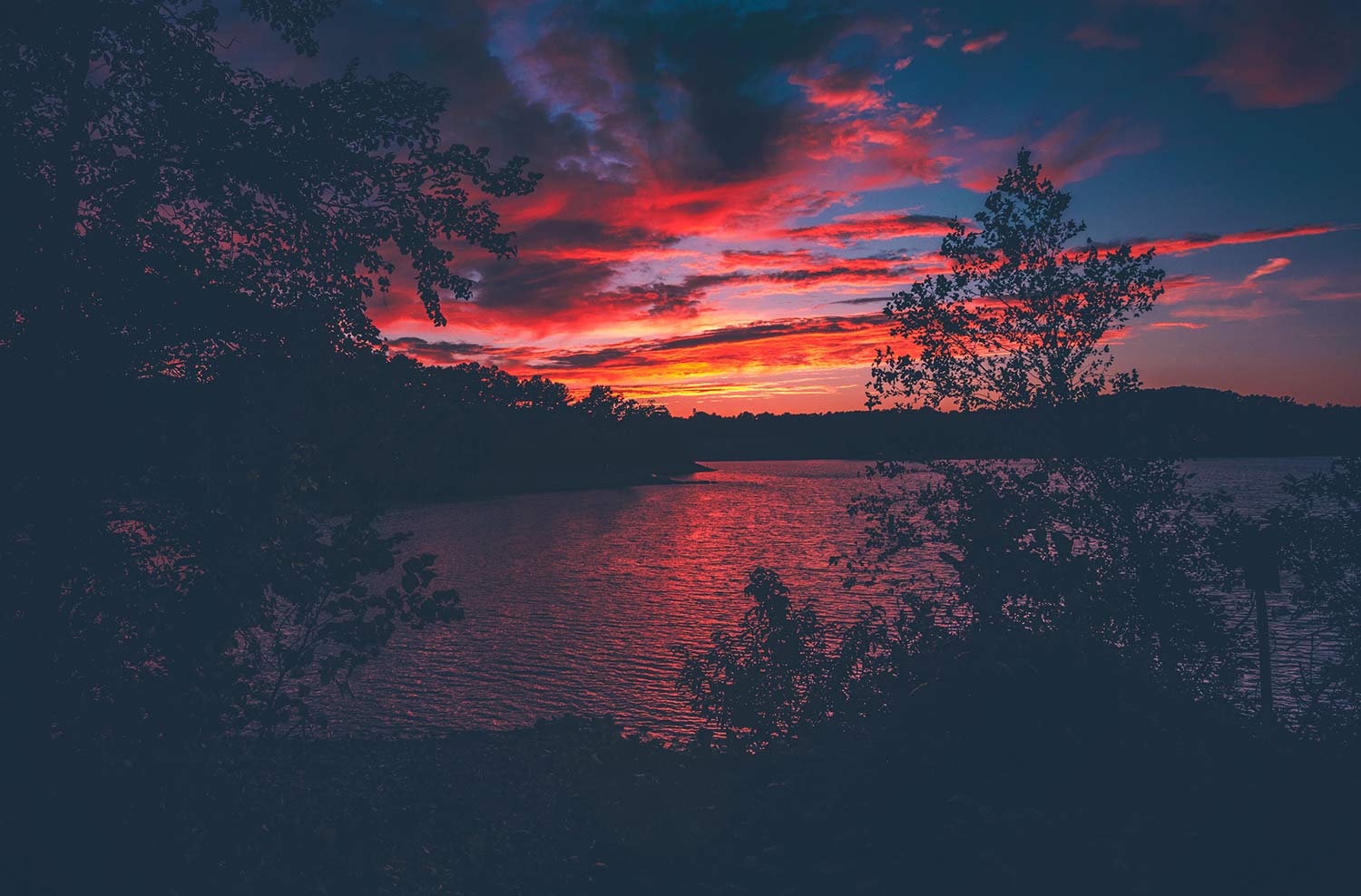
The oranges, reds and golds that suddenly come to life in the sky are truly a spectacle to behold, which makes the gamble of waiting for it definitely worth it. The immediate orange colours, tones and hues then giveaway to striking pinks and magentas, colours you would never see from a conventional sunset photograph, and all without that pesky bright sun ruining your composition!
Hopefully after reading this article and seeing the incredible pictures one can capture of the second sunset, you’ll be inspired to hang around until after the sunsets to capture stunning photographs of the landscape.
The Second Sunset may not always come to fruition, which, if you’ve carried heavy camera equipment to a very precise location, can result in epic frustration and disappointment like no other.
BUT!
With some prior knowledge of the weather and how it affects the sunset (and sunrise for that matter), we photographers can greatly improve our chances of witnessing the most epic sunsets ever!
In order to build our knowledge and learn how to predict this epic light show of the second sunset, we need to answer a few basic questions.
Firstly.
Why is the sunset red?
Light, as I’m sure you know, is on a spectrum, from Ultraviolet (UV) all the way to Infrared.
Within that spectrum is the range of light we humans are able to see.
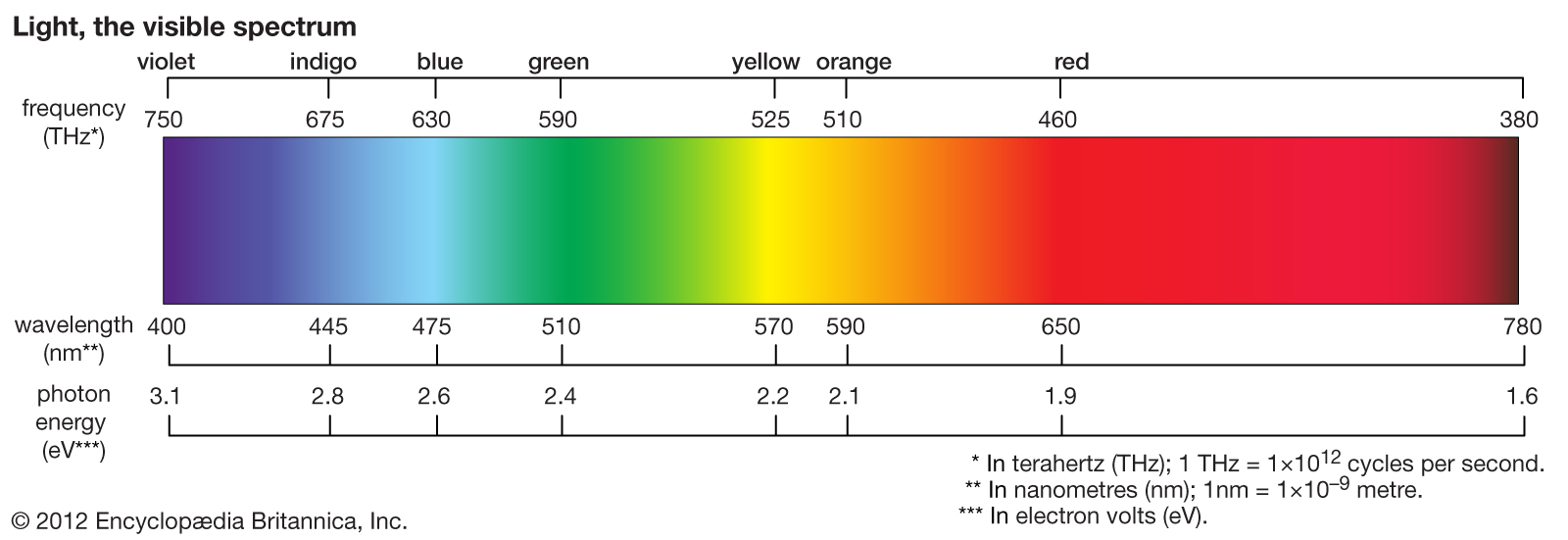
Red light waves are least affected by the gas molecules that exist in our atmosphere, so, at sunrise or sunset, the light from the sun skims across the top of the earth’s atmosphere and has to travel through a lot of atmosphere before it reaches our eyes.
The blue light, which is affected by the gas molecules in our atmosphere, are largely scattered, leaving only reds, yellows and oranges behind. The more ‘stuff’ there is in the atmosphere, the more the blue light is scattered, and the more intense the red colours.
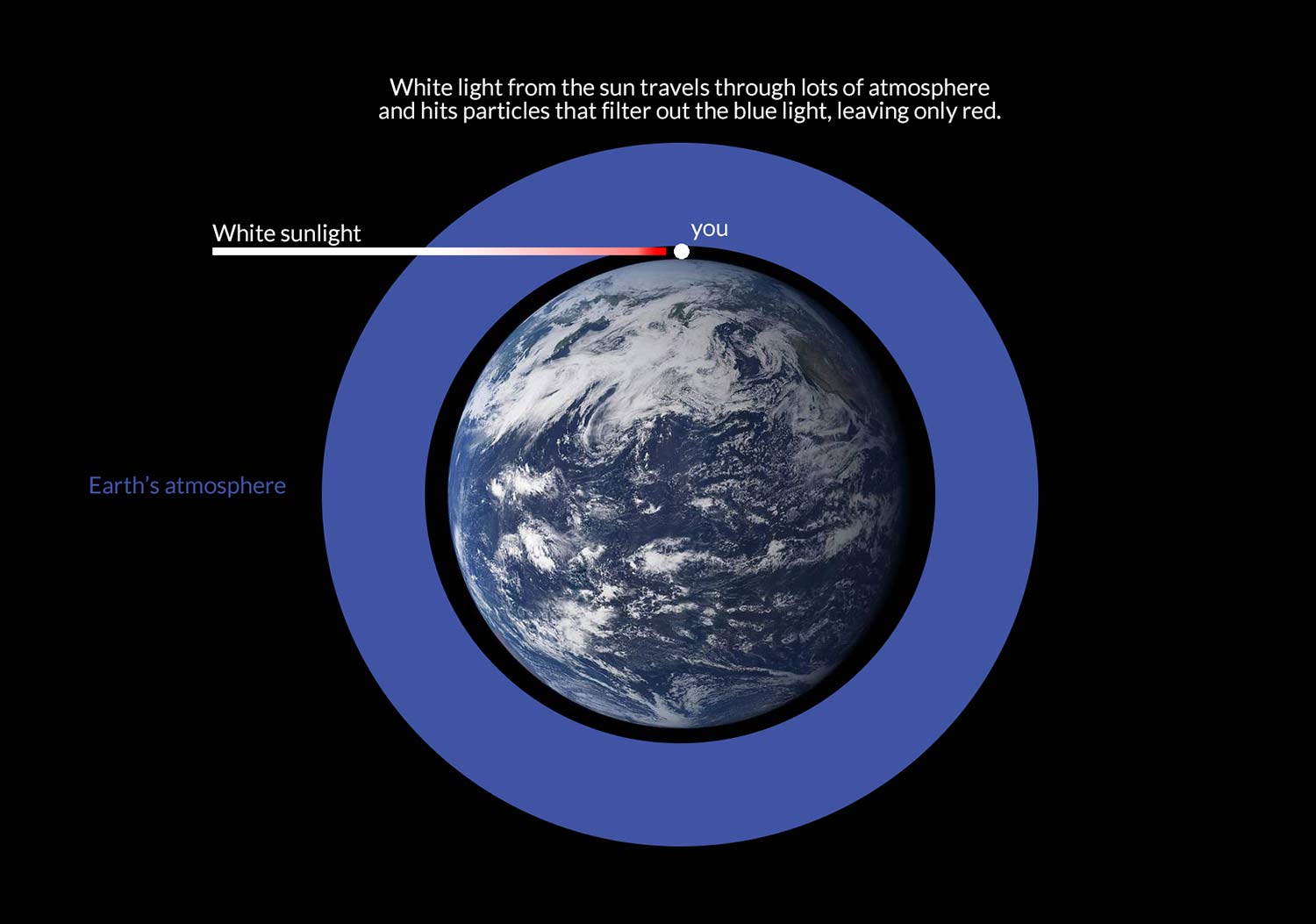
That’s a basic explanation anyway.
For the physicists amongst the readership, the process is called Rayleigh Scattering.
As light passes through the Earth’s atmosphere, shorter wavelengths of light (blue) are scattered more than longer wavelength light (red).
The sky is blue during the day, as the light has to pass through a lot less atmosphere as the sun is overhead. Less of the light is scattered, which makes the blue light visible.
During sunset, the opposite is the case. More atmosphere to travel through, more ‘stuff’ for the blue light waves to hit and be scattered by, end result, red light!
The British physicist Lord Rayleigh came up with this theory as to why the sky is blue, and most humbly, names it after himself.
How to predict an epic sunset – Red sky at night…
Red sky at night, shepherd’s delight. Red sky in the morning, shepherd’s warning first appears in the Bible in the book of Matthew. The saying is known for helping shepherds prepare for the next day’s weather. We can hijack this for the betterment of our photography.
“When it is evening, ye say, fair weather: for the heaven is red. And in the morning, foul weather today for the heaven is red and lowering.”
Thanks Jesus.
Like most old sayings, there is truth to be extracted from this statement.
As we found out earlier, red skies appear when dust and gas particles are trapped in the Earth’s atmosphere.
High pressure is what traps the particles, and the weather moves from West to East in the mid latitudes.
So, a red sky at sunset means high pressure is moving in from the west and the likelihood then is that the weather the next day will be good.
Red skies in the morning means the high pressure has already passed over, most likely making way for a low pressure front. A particularly red morning may also mean that heavy rain is on the way.
Red sky at night – as the weather front moves over, sunrise might be epic.
Red sky in the morning – chances are bad weather is coming, and low pressure means no particles in the atmosphere, so no epic sunsets.
Of course there are many factors at play that dictate how the sunset and sunrise materialise, the seasons, the geographic positioning of the landscape you want to photograph, cloud cover, humidity etc. which is why a quality weather app can save you many headaches trying to predict the weather.
The best sunset predicator app
Wundermap is probably the best sunset predicator app I’ve seen: https://sunsetwx.com/
It’s really simple, the warmer the colour on the map, the better the sunset.
Notice how it follows red, blue, red, blue? There’s truth in them old sayings!

Here are a few tips on what to look out for when trying to predict an epic second sunset:
- Humidity — Ideally low humidity
- Clouds — You need some cloud cover to act as the ‘canvas’, somewhere between 30-60% is ideal. Much higher and you won’t see a thing.
- Rainfall — A few hours prior to sunset is ideal as it ‘clears the air’, but not worth heading out if it’s forecast during sunset.
- Visibility — the higher the better.
- Wind — no wind is best
- Fog — Definitely no fog
Are you ready to geek out on clouds?
Yeah!
If there is thick cloud on the horizon, then sunlight won’t be able to penetrate them, which of course means no cool sunset for you.
Equally, a completely clear sky can also result in boring photographs, as you need texture in the sky for visual interest, but you also need a canvas for the amazing colours to fall upon.
That’s why you want your cloud coverage to be somewhere between 30-60%
I mentioned trusting your instinct, this definitely applies when looking at cloud cover. But knowing certain cloud formations (although maybe seen as super geeky) will give you a potential advantage. If a really cool cloud formation is present in the sky in mid afternoon, and there is very little wind, chances are you’ll have a real spectacle on your hands later that evening.
- Cirrocumulus Clouds – Like a gentle ripple of water across the sky, this cloud formation looks amazing at sunset.
- Altocumulus Clouds – Typically appearing after a storm, these can be sheet like, or even form in round clumps of ‘cloudlets’
- Cumulus Clouds – Puffy clouds, like the ones children always draw
- Cirrus Clouds – delicate and wispy, like sheets of silk – be warned, they can be a marker of bad weather to come!
Inspirational places for sunset photographs
For some inspiration, here are the five amazing locations in the world for epic sunsets for you to plan your next photography trip to:
- The Taj Mahal
- The Atacama Desert
- The Matterhorn
- Siem Reap
- Isle of Skye
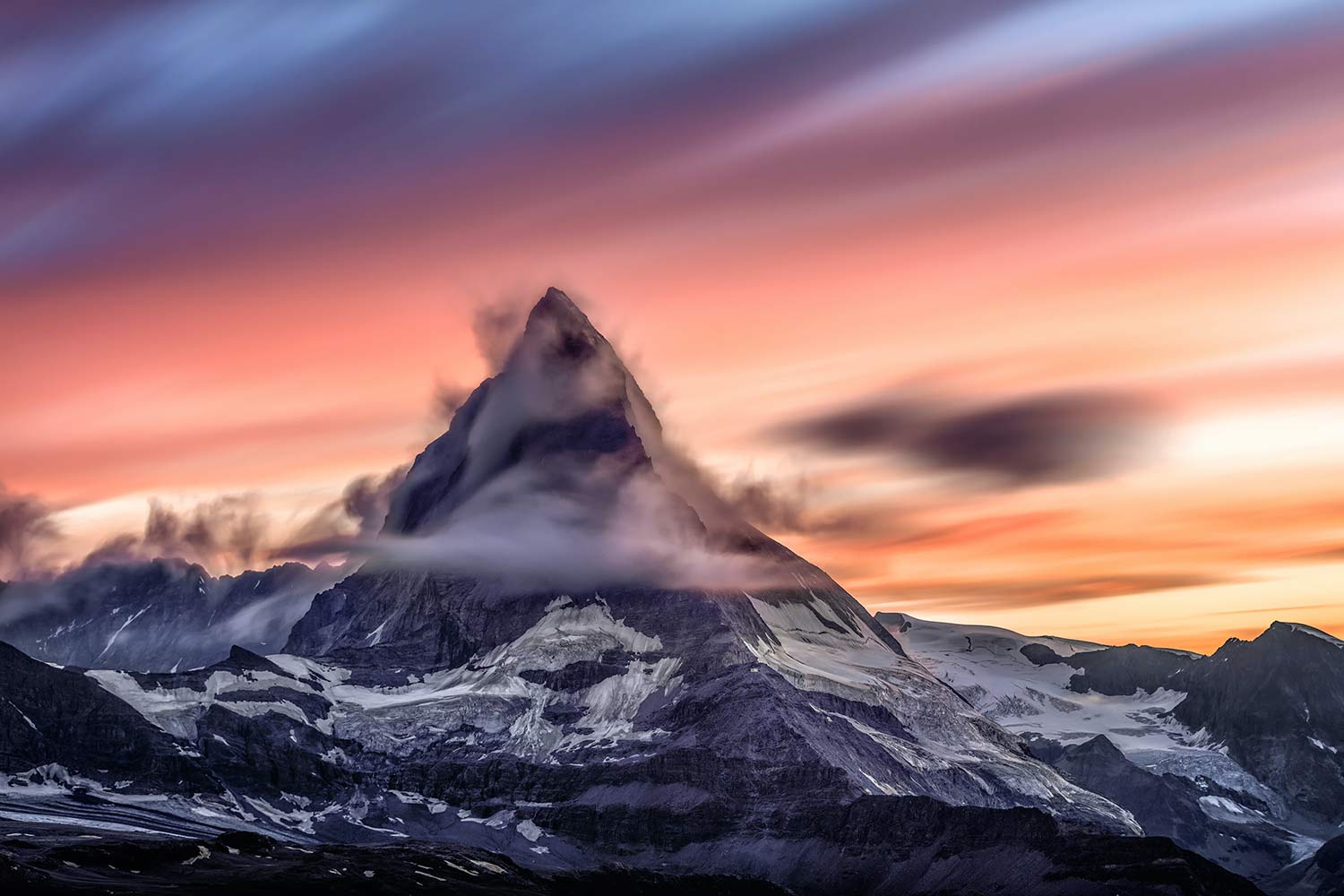
The most beautiful second sunset I’ve seen was in Costa Rica. It was Christmas day, we’d just had dinner and walked down to the beach to watch the sun go down on our first Christmas as a married couple. It was truly stunning.
What made the scene doubly special was the light reflecting off of the water. Be mindful that this can create a new element in your picture, you could even use a slow shutter speed to completely blur the movement of the water and create a canvas of pure colour. I’ll find the picture I took and add it in later.
Autumn and Winter – The best time of year for sunset photographs
There’s something about the quality of light in the winter time, it’s magical. The sun is farther away, and the light falls on the Earth at a much shallower angle than compared to the summer months. Shadows are therefore much longer and more dramatic. But there’s something else, a magical quality to it.
From a scientific point of view, there’s no haze as the air temperature is so much lower, and also cold air holds substantially less moisture than warm air. There are of course exceptions, and plenty of amazing pictures taken all year round, but if you’re going for a hero shot, do some test runs in the warmer months, then get ready for your competition winning picture to reveal itself in the winter.
With the quality of light and long shadows comes some trade offs. Winter brings with it worse weather, and complete cloud cover is useless to us sunset seekers as it will block out all directional light. That’s not to say a trip to a beauty spot has to be wasted because the sunset didn’t’ pan out how you’d planned. Some of my favourite ever pictures were taken on rainy days. When the clouds part and that ethereal light falls on the land, it’s hard not to be inspired by the divine.
Although photography takes years to master, we’ve all seen sunsets, and we’ve all experienced the weather change, so there is a large element of relying on your instincts. Air pressure is certainly something we can sense, and a few hours before the sun starts to set it can be quite clear how the cloud formations will present themselves. Trust your gut, adventure is half the fun anyway.
How to photograph a sunset – setting exposure correctly
By nature the sunset is going to be backlit as of course, you’re going to be pointing the camera in the direction that the sun has set in order to capture the most intense colours.
There’s nothing stopping you having the sunset behind you and allowing all of the warm tones to land on the scene behind you, if you’re taking portraits this would even be massively advantageous, but that’s your decision to make as the creative.
Without the sun in the sky the camera’s exposure meter should be much more accurate as there isn’t a bright white blob in the sky telling your camera it needs a fast shutter speed and ultimately underexposing the whole scene.
What you will want to be careful of however is the tendency of the camera to overexpose the second sunset. There are beautiful muted tones available, and a certain calmness that comes with near dark, be careful your camera doesn’t try to expose the scene as if it were midday and overexpose all of the beautiful colours.
The easiest way
If you’re shooting in an automatic mode or semi automatic mode, such as P, AV or TV, make sure you know how to adjust the exposure compensation, just in case the most epic shot appears, but your camera is overexposing the image, a quick flick of the dial means you won’t panic, and can adjust quickly without having to ponder for too long.
I would recommend you become familiar with the following two controls to make photographing the second sunset much easier. They are spot metering and exposure lock. If you are shooting in an automatic mode and want to expose for the brightest part of the scene, then you want to select spot metering on your camera, and point the middle of the frame at the brightest part of the scene.
Spot metering takes a light reading from a very small region right at the centre of the frame. Once you’re pointing the camera at the brightest part of the scene, you’ll want to lock the exposure settings, otherwise, when you recompose the photograph, the camera exposure settings will change.
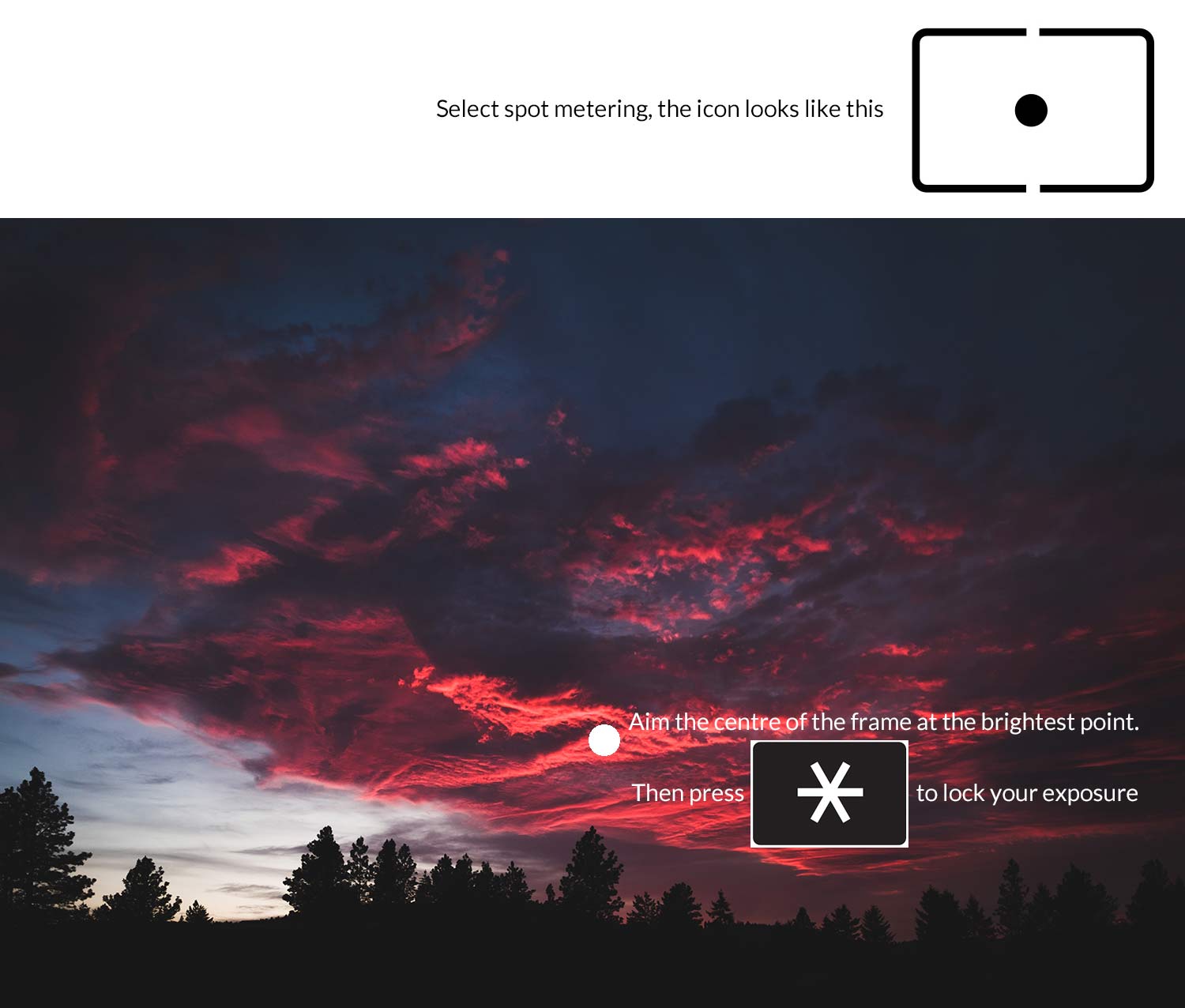
Shutter speed – if you’re handheld, don’t go lower than 1/60, using a tripod? Be mindful that the light levels will drop very, very quickly, so it’s still best to keep shutter speed relatively fast. You may find that you have no choice however, and using a shutter speed of 10 seconds is not uncommon.
Aperture – Assuming you’re shooting a landscape, you’ll want a small aperture to capture the majority of the scene in sharp focus. Expect to be shooting around f/8.
ISO – Light levels are low, but you want to preserve the range of colours, start with ISO 100 and view the histogram on your camera, or just judge with your eyes and increase the ISO as necessary.
There is nothing quite like the appearance of the sky as it catches fire. A pink, magenta, orange and crimson sky cannot be ignored, there are sometimes little else you can do other than be completely awestruck by the magnificence of nature.
Nature can be entirely unpredictable, but I hope from looking through the pictures in this article you’ll agree that staying out after sunset is definitely worthwhile, maybe even more rewarding than watching the sun itself go down. Don’t rush home as soon as the sun drops below the horizon, stay out a little bit longer and see if you aren’t rewarded with your best photographs yet.
